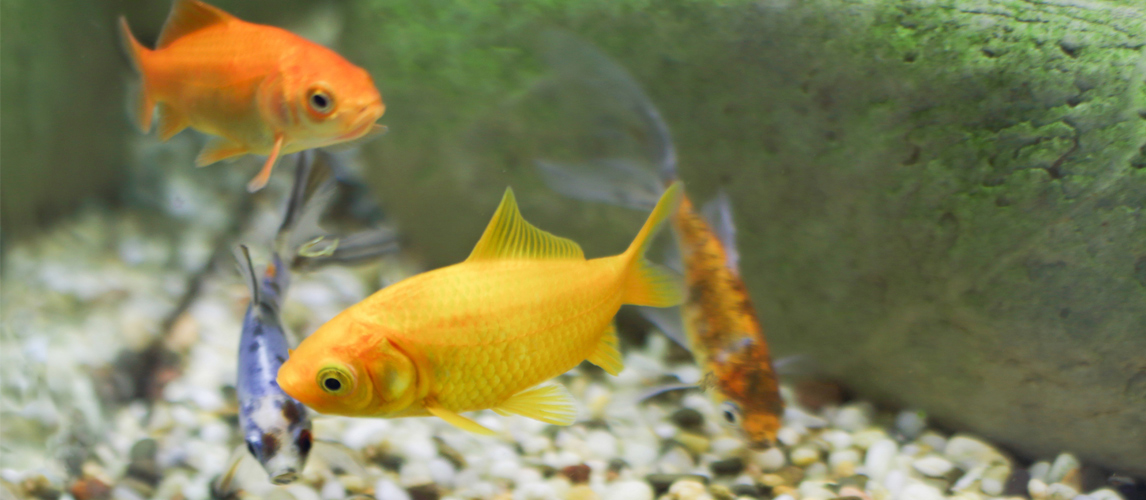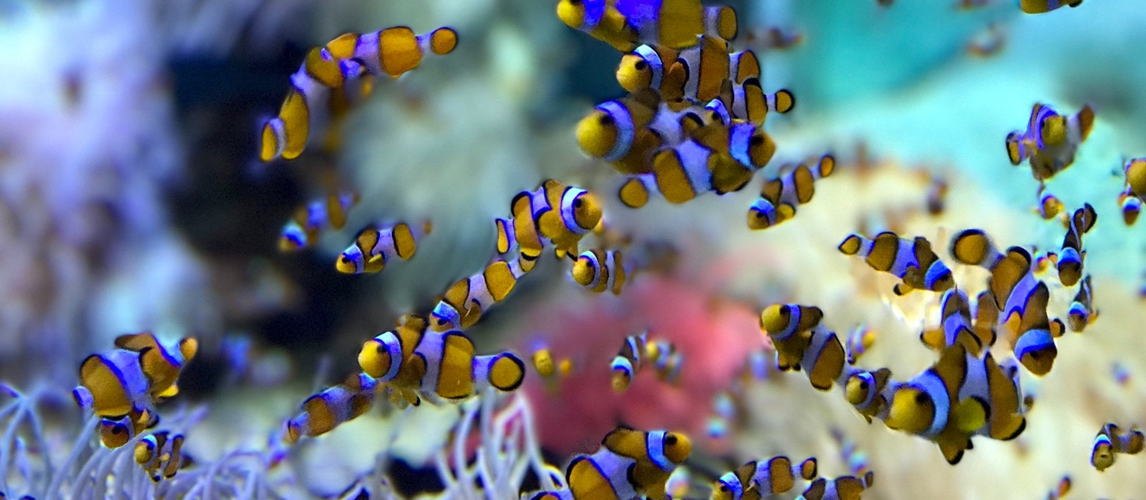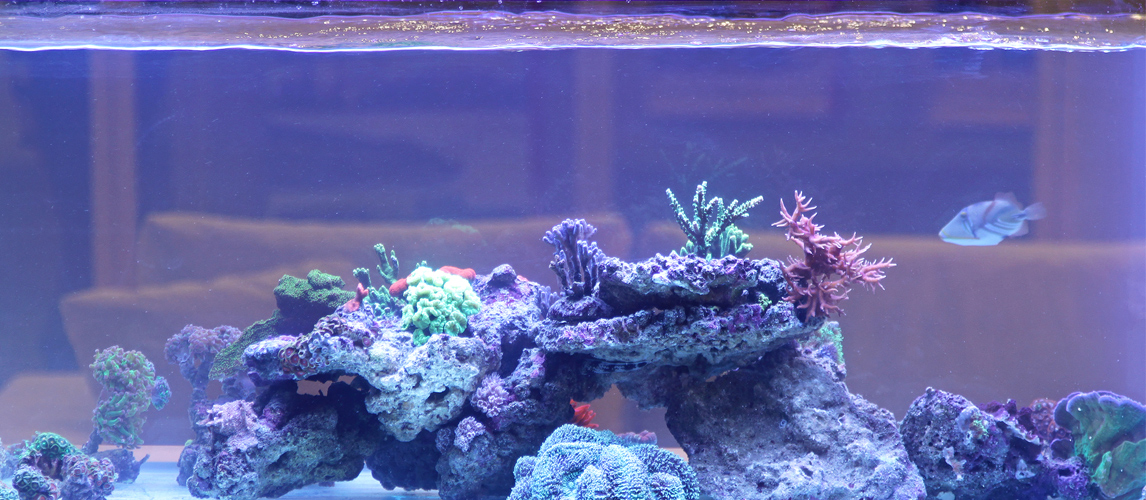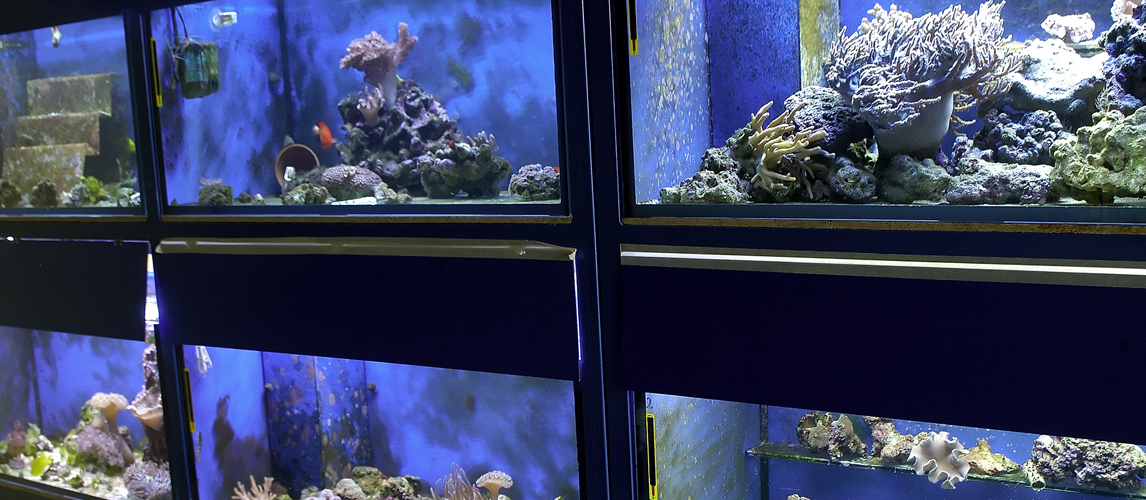
The Best Aquarium Chillers in 2022
- Home
- Other animals
- Fish
Aquariums need to be maintained at temperatures that are optimal for the species that you are keeping. If the temperature gets too hot, it causes the aquatic animals stress and they will not thrive. Fluctuations of temperature can be caused by climate, heating and by devices associated with aquariums including lights and filtration pumps.
You can control these fluctuations and keep your aquarium at a nice cool operating temperature by installing an aquarium chiller. Some are simply fans that clip to the top of the aquarium but others are mini-refrigeration units that cool the water. They can be fitted in-line or can be drop-in and you can set the required temperature. To help you make the right choice, check out our guide to the best aquarium chiller.
The Best Aquarium Chiller
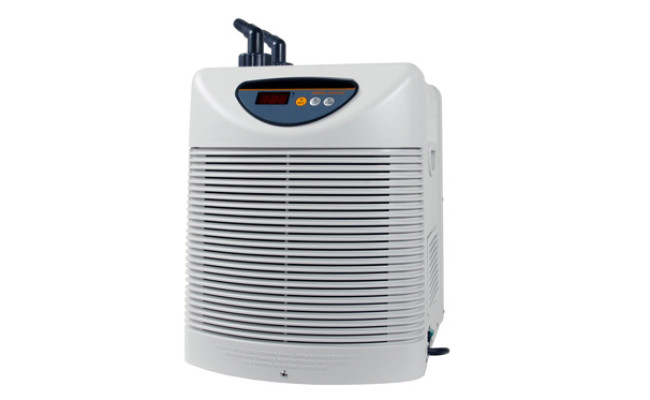
Perfect for use with an aquarium, this quarter HP chiller will maintain just the right temperature for your fish to thrive. It is capable of maintaining a consistently cool temperature. It uses R410a refrigerant liquid and is therefore completely freon free. There is no annoying loud noise and it has an easy to understand LCD display to control its microcomputer operation.
There is a sizable refrigeration capacity of between 26 and 80 gallons and it can chill 80 gallons of water by 15 degrees F. If your aquarium holds only 26 gallons, it will chill it by 30 degrees F over 20 hours as it has a high flow rate of between 264 and 660 gallons per hour. Because the evaporator is made from pure titanium, it does not corrode and can therefore be used with both fresh and saltwater.
Uses R410a refrigerant liquid
Quiet operation
Chills 26 gallons by 30 degrees F over 20 hours
Can be used with fresh and saltwater
- Brand: Hydrofarm
- Model: AACH25
- Weight: 38.4 pounds
Maintains a constant temperature
Environmentally friendly
Very easy to set up and operate
May not be adequate if extensive cooling is required
Have to purchase separate pump
May not start up at exact temperature set
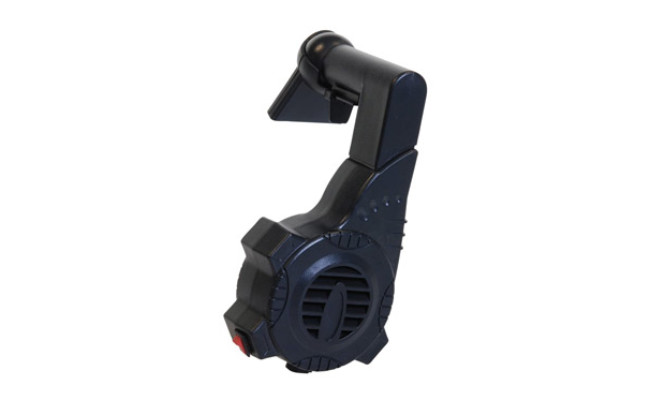
Zoo Med’s aquarium cooler is the ideal water cooler for smaller tanks – around 5-10 gallons. It’s small but effective, with a simple suction cup attachment, so you can move it around as and when you feel the need to. They have also carefully designed the duckbill nozzle for optimum airflow, resulting in a highly efficient cooling system. This aquarium cooling fan is a low voltage design, saving you money whilst keeping your tank cool. Additionally, the duckbill nozzle is also easily adjustable, so you can angle it just right to suit your aquarium, minimizing water disruption and movement.
Customers that have purchased this cooling fan in the past have said that this fan easily keeps the water temperature around 64-65 degrees, even though the ambient temperature of the room can easily exceed 70 degrees. These happy customers have been generally thrilled with the result and said that it has proven a worthwhile purchase for aquarium owners on a budget. It is quiet, low voltage, easy to attach, and simple to use.
The low profile unit attached via suction cups.
Ideal size for nano tanks (5-10 gallons).
Adjustable duckbill nozzle avoids water movement.
Best suited to freshwater tanks.
- Brand: Zoo Med
- Weight: 1.1 Pounds
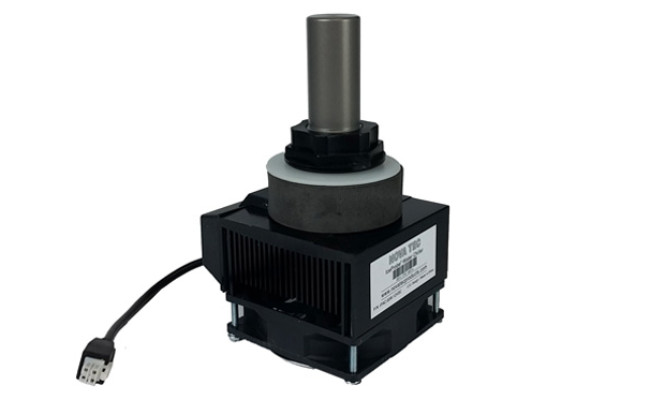
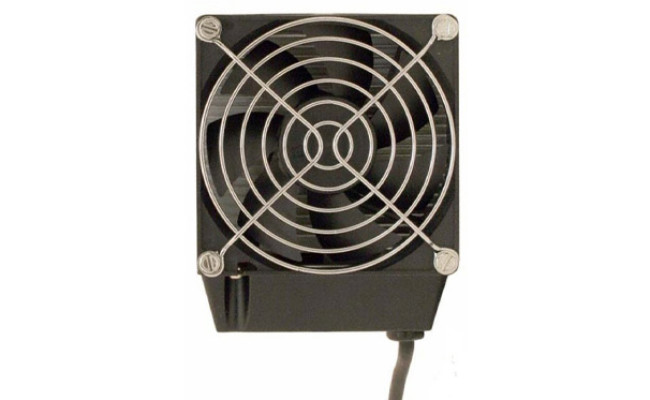


An effective solution for temperature regulation issues within your aquarium. This fish tank chiller will work well in smaller aquariums. It has a quiet operation and is both reliable and efficient thanks to the advanced thermoelectric technology. It runs on electric power which is converted to cooling power to reduce the temperature of the water. You can bulkhead it through a one and a quarter inch gap in a siphon overflow or it can easily be fitted to prefilters and sumps. You can fit it directly into plastic aquariums.
The chilling action is continuous so there is no on/off switch to worry about however, you will need to use a separate temperature controller to control when the chiller is turned on and off to maintain your required temperatures. The device is capable of chilling 10 gallons of water by around six or eight degrees F. In larger aquariums, it can chill 20 gallons of water by three or four degrees F or 40 gallons of water by just one or two degrees F. Therefore, you may need to use multiple units if you have a large aquarium.
Very flexible about where it will fit
Needs a separate thermostat
Can chill 10 gallons of water by around six or eight degrees F
Reliable and efficient
- Brand: Nova
- Model: B001JSVLBO
- Weight: 3.2 pounds
Provides rapid cooling in a small aquarium
Virtually silent operation
Prevents sudden temperature changes
Produces a lot of heat
Not powerful enough to drop the temperature by a large margin
Will not be suitable for larger tanks
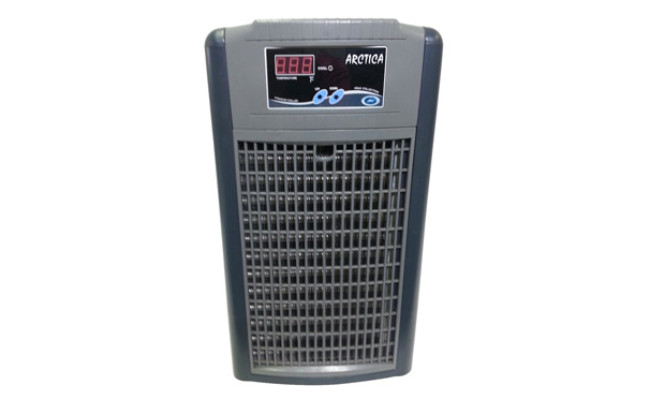
This 1/15th HP aquarium chiller has a clear digital LED temperature display that gives the temperature in degrees F and can be read easily in the day or at night. It can be used to effectively chill up to 40 gallons of water.
The fish tank chiller can be easily fitted in series in your circulation system and takes just minutes to install and set up. It has a highly advanced operation but is very quiet. The condenser is highly efficient and uses very little energy, saving you money. It has titanium refrigeration coils which are both highly efficient and resistant to corrosion. The unit has a small foot print and has a very compact design.
Will chill 40 gallons of water
Quick and easy to install and set up
Highly efficient and quiet
Titanium refrigeration coils resist corrosion
- Brand: JBJ
- Model: DBI-050-D
- Weight: 25 pounds
Accurate temperatures
Very quiet operation
Works well in a 55-gallon tank
Some reliability issues
Unit runs constantly
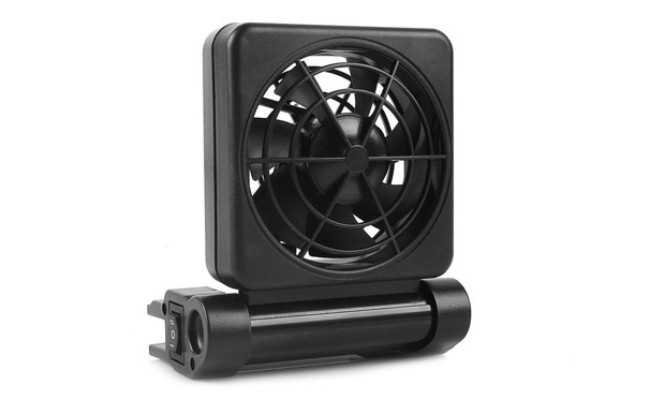
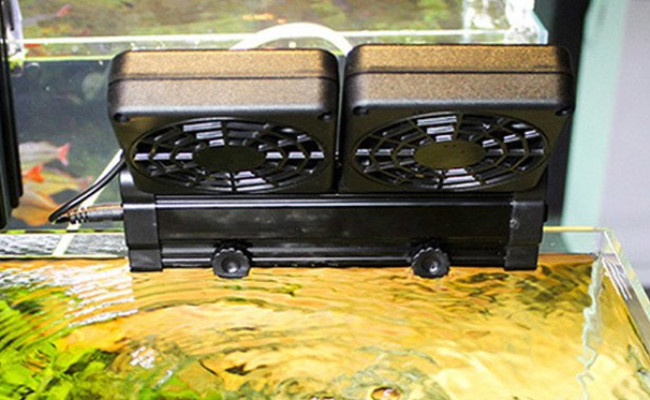


This aquarium cooler is a fan that is designed to fit on the wall of your aquarium and slots onto the lip around the top edge. One fan is sufficient for a 10-gallon aquarium but you can use several fans together for bigger tanks. It is capable of reducing the water temperature by around two to four degrees C.
It would be very useful to use when you need to cancel out the heat created by lights or UV filters. The fan has a variable speed setting and has a wide-angle adjustment. It fixes to the aquarium using a clamp that is both stable and strong. It simply clips on and there is no complicated set up required.
One fan needed for a 10-gallon tank
Reduces temperature by two to four degrees C
Variable speed setting
No set up required
- Brand: Petzilla
- Model: PCF-1
- Weight: 11.2 ounces
Cools quickly
Maintains a steady temperature
Saves money on chilling
Produces evaporation
Will not fit onto all tanks
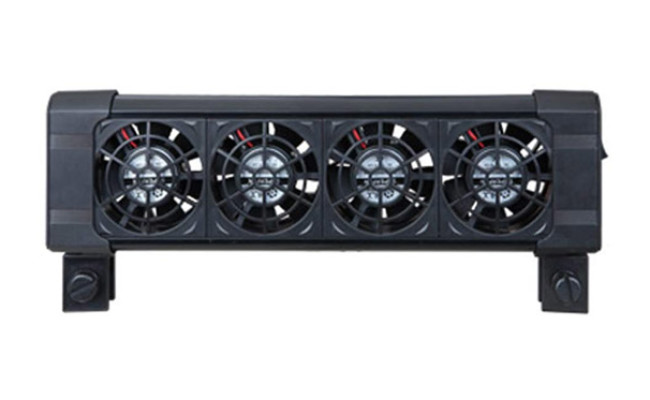
The NTRA aquarium cooling fan has been designed to fit a variety of tank sizes, depending on the fan you select. It is available with 2, 3, or 4 fans, meaning it can be used with tanks anywhere up to 125 gallons. Even when four fans are active at once time, this is still an exceptionally quiet design, meaning it creates minimal sound disruption in the room, and for your fish. Not only that, but the fan itself does not consume much power, saving you money on your electric bill. The fans of this cooler have been specially designed to minimize water disturbance, whilst maximizing airflow.
Though this fan can be extremely effective in maintaining the temperature of a smaller tank, should you choose to attach it to a larger tank you may want to think about using it alongside another, more heavy-duty water cooling device. Larger tanks benefit from more penetrative cooling methods, and whilst this fan is great for maintaining the surface temperature of the water in a large tank, it may not be able to permeate deep enough to cool the entire thing.
Can be used alone or alongside an auto temperature controller.
Available in three sizes – 2/3/4 heads.
Lower power consumption with little noise.
Large, even air output.
- Brand: NTRA
- Weight: 0.35 Ounces
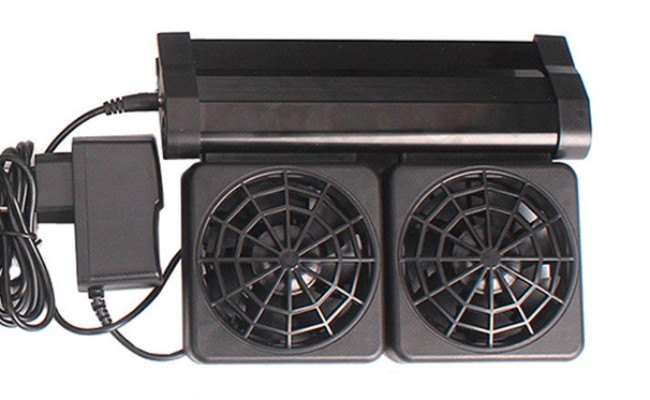
This is a cost-effective solution to aquarium cooling. It is a set of two compact fans that have a two-speed control. They are capable of reducing the water temperature by around two or three degrees C. They fit onto the aquarium using adjustable jaw clamps and will suit any aquarium with walls up to 1.2cm thick.
This aquarium fan requires a 12V power supply and is manufactured to the highest safety standards. It includes a bracket so that you can adjust the direction of the fan by up to 100 degrees. This product is very quick and easy to install and can be moved from one aquarium to another with ease. They are particularly useful to prevent aquarium equipment from heating up the water. The operation is quiet and they can be used with saltwater aquariums and fresh water aquariums. They use only a small amount of power.
Cheap to purchase and run
Quick to install
Direction of fan can be adjusted
Will fit to most aquariums
- Brand: LONDAFISH
- Model: B07FCJGZ4H
- Weight: 1.2 pounds
Effective at dropping temperature of water
Quiet operation
Very useful to have two speeds
May drop temperature too far if left running for days
Will not work with tanks with a black rim
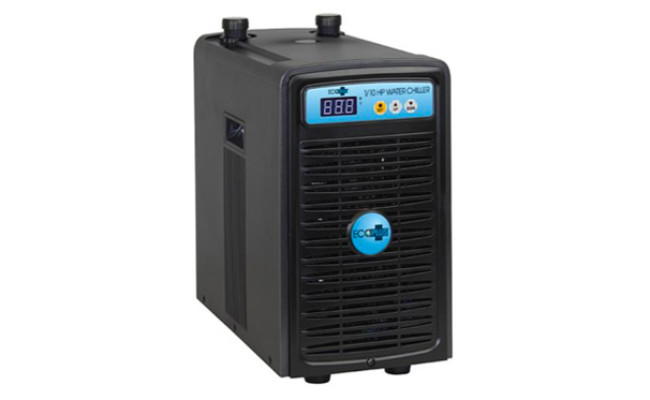
A combined chiller and pump that will help you to maintain a suitable temperature in your aquarium. It has half inch fittings and requires a 120 V-60 Hz/264 watts power supply and is 1/10 HP. The pump will circulate 66 gallons per hour to a maximum of 317 gallons per hour.
The device has a built-in microcomputer that lets you know what is going on with a digital LCD display that is clear and easy to read. It can be used with fresh or saltwater aquariums. The chiller uses a titanium heat exchanger which gives optimum performance and which will resist corrosion. It also features a high-quality compressor so it is both efficient and very reliable.
Combined chiller and pump
Requires a 120 V-60 Hz/264 watts power supply
Built-in micro computer
High quality compressor
- Brand: EcoPlus
- Model: EP1123
- Weight: 25 pounds
Maintains temperature
Doesn’t need a separate pump
Does not rust
Can get very hot
Instructions not very clear
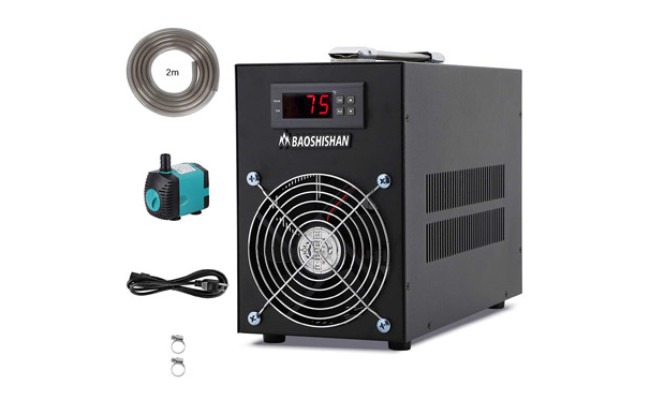
The BAOSHISHAN aquarium chiller is an ingenious design that keeps your aquarium cool with minimal disturbance inside the water. It is capable of easily cooling an 80-liter tank (so long as it doesn’t have high-powered lights or pumps) from 82F to 77F. This not simply a cooling fan, but a refrigerated cooling pump. By this, we mean that it works alongside your tank with a pipe submerged deep within the water, a secondary pipe hovering above the water, and a temperature probe. It will then measure the ambient temperature of the tank, and begin to steadily pump water through the titanium coil cooling system. Once the water is cooled it will be redistributed slowly back into the tank via the pipe overhead.
This cooling system is suitable for both freshwater and seawater tanks. Though there are a couple of things you should consider before purchasing one. If you have particularly small fish, be wary of the possibility of them getting pumped into the cooling system; whilst it is not a powerful pump, it can still be a risk to tiny fish. Additionally, this unit does need to operate alongside your tank, so be sure that you have plenty of space in the display area before setting it up. All in all, not only is this a highly effective piece of aquarium equipment, but the customers have also remarked on the professionalism and sincerity of their customer service.
Available for two aquarium capacities.
Equipped with a temperature probe to regulate temperature.
Capable of cooling 60 liters from 82F to 77F.
Pumps warm water out and cool water in.
- Brand: BAOSHISHAN
- Weight: 10.82 pounds
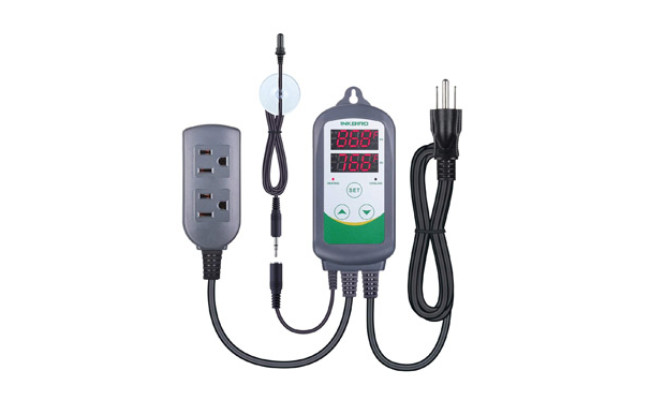
This is unique to the other aquarium chillers on our list due to a single, extremely helpful feature; the Inkbird ITC-208S is not only a chilling system but a heating one as well. Specifically, it is a temperature control system, which makes it especially useful for tropical fish owners, where temperature control is extremely important. Often tropical temperatures in an aquarium cannot be reached or maintained without the use of an aquarium heated – that is where the Inkbird comes in. It is capable of monitoring the temperature of your tank constantly, adjusting between heating and cooling modes to keep it at the optimum temperature.
It is perfectly suited for both freshwater and saltwater tanks. Additionally, an extremely helpful feature well worth knowing is that this device also has high and low-temperature alarms as well as sensor-failure alarms. This means that if the tank starts to get too warm or drop too cool, you can come to manually adjust that temperature and ensure your fish stay comfortable. It is a piece of equipment well worth having, especially considering the company has an automatic one-year warranty on this product, to give you peace of mind whilst trying a new piece of unfamiliar equipment.
Has both heating and cooling features.
Suitable for both freshwater and seawater.
High and low-temperature alarms.
Sensor failure notification alarm.
Automatic one-year warranty.
- Brand: Inkbird
- Weight: 15.2 Ounces
Best Aquarium Chiller Buying Guide & FAQ
What to Look for in an Aquarium Chiller
Before you go out and buy an aquarium chiller, check out this list of the things that you should look for.
- Chiller or fan
Your first decision is whether you want an aquarium water chiller that will cool the water or a fan that will blow air across the surface of the water. Fans are great for canceling out the effects of hot lights but for maintaining a steady low temperature in a larger aquarium a chiller will be best. These have refrigeration plates over which the water is passed so they work with a pump.
- Type of chiller
If you decide to get a chiller, there are two types that you can look out for. In-line chillers are best for larger tanks with in-line filtration and they will cool filtered water. They are also best for use with saltwater reefs. Drop-in chiller probes go in wet/dry filters or sumps. They are mostly used with saltwater reef setups and come in many sizes and powers. They are quicker to set up because they have no plumbing.
- Power of the chiller
The power of in-line chillers is usually given in HP and they range from 1/5 HP to 1/3 HP. You need to get one that will suit your size of aquarium. They take a while to set up as they have to be plumbed in and they are not meant to be transported from one aquarium to another.
- Temperature range
Check that the chiller is capable of maintaining the temperature range that you need it to.
- Noise emissions
If the chiller is very noisy to can get annoying.
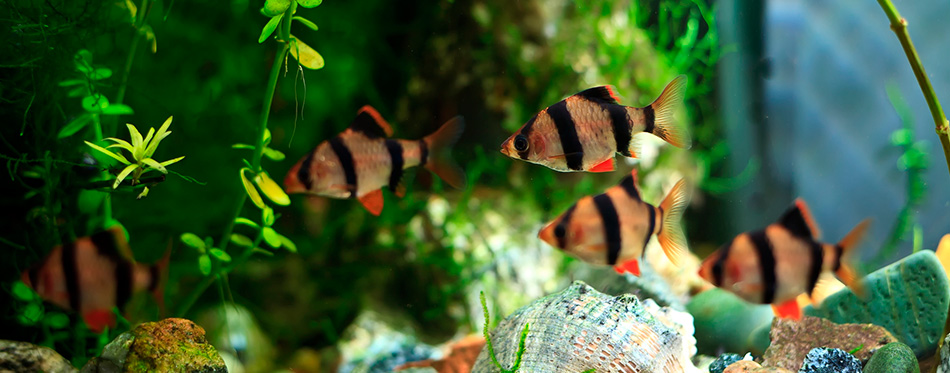
Benefits of Aquarium Chillers
Every aquatic species has an optimum temperature at which they do best and thrive. If your aquarium is operating at above this temperature, they will struggle to survive. When the water in an aquarium becomes too hot, there will be less oxygen dissolved in the water and this is not healthy for the plants or the animals in the tank. It is a particular problem at night and when ambient temperatures are warm. Shrimps, in particular, can suffer damage to their immune system when the water is too hot.
It is not just species from temperate or arctic climates that require aquarium cooling. Subtropical species require water to be at 18 to 25 degrees C and will suffer severely in a heat wave if the air temperature reaches 30 degrees C. Also, even some tropical species prefer cooler waters if they naturally live at deeper levels where the temperatures are cooler.
Here are some of the main benefits of a fish tank cooler.
- They help keep the aquarium cool when the ambient room temperature is higher than the temperature that you want the water to be.
- They are especially useful when you want to keep cold water species.
- They help you to cope with seasonal heat-waves that can be so damaging to many aquariums.
- They are essential if you live in a very warm climate.
- They cancel out the heating effect of lights and pumps.
Types of Aquarium Chillers
There are two main types of aquarium chillers. The first type is basically a fan that blows air across the top surface of the aquarium. You can use just one fan or you can use multiple fans next to each other. The fans are small and are attached to the rim of the tank using a clip.
They work using the principle of evaporation which cools the surface that the water is evaporating from. They can be very useful for preventing lights from overheating. They do not chill the water itself and may not be effective in very warm ambient temperatures or for very large tanks.
The second type of aquarium chiller is a refrigeration device that actually cools the water in the aquarium. These tend to be more expensive and take a little longer to set up. They work by passing the water over cooling plates so you need to pump the water around. If they do not come with a pump, you will need to fix them up in series with an existing circulation system or buy a separate pump.
How to Install Aquarium Chiller
Your aquarium chiller will come with instructions and it is important that you follow these carefully. Drop-in chillers are very easy to set up as you literally just drop them in. However, in-line chillers are more time-consuming to set up. To install an in-line chiller, you will need a feed pump, an installation unit and hose clamps.
Your aquarium will probably have a reservoir in the bank where the majority of the filtration is housed. The best plan is to embed a feed pump into the reservoir and it will normally fit here very well. All you have to do is append the U-tube using a hose clip and put it in the reservoir. Then, just run the tube from the pump to the chiller inlet. After this, you run the tube from the chiller’s outlet into the aquarium. Finally, connect the tubing using an S-tube which will hang down the back of the aquarium. Double check everything and then set the desired temperature. It can take a day for the temperature to stabilize.
Best Aquarium Chiller FAQ:
Q: What is an aquarium chiller and how does it work?
A: Aquarium chillers are devices that reduce the temperature of water in an aquarium so it matches the preferred temperature of the species that you are keeping there. They can simply be fans that blow air across the surface or they can be refrigeration plates across which the water is pumped.
Q: Why do aquariums over-heat?
A: Aquariums can over heat for many reasons. Humans like their houses to be warm and this may be too warm for the species that you are keeping. There may be sudden increases in ambient temperatures – heat waves. Also, the equipment associated with aquariums (such as pumps and lights) can give out a lot of heat and this can heat up the water.
Q: Where should I place my aquarium chiller?
A: In-line chillers are usually placed in the reservoir in the bank where most of the filtration equipment is housed. Drop-in chillers have a probe that goes into a wet/dry filter but it can go into any filter with a sump. Fan-type chillers are clipped to the top of the tank.
Q: How do I clean my aquarium chiller?
A: Most manufacturers will give instructions on cleaning. The mesh filters on the chillers should be vacuumed or brushed weekly. Once a year, a compressor should be used to clean out the chiller plates.
Our Top Pick
Our top pick of the best aquarium chiller is a quarter HP chiller using R410a refrigerant liquid and is therefore completely freon-free. It is quiet and has an easy to understand LCD display to control its microcomputer operation.
The refrigeration capacity is 26 to 80 gallons and it can chill 80 gallons of water by 15 degrees F. It has a high flow rate of between 264 and 660 gallons per hour. Because the evaporator is made from pure titanium, it can be used with both fresh and saltwater.
Source:
Sharon is a Ph.D. scientist and experienced pet content writer. As a life-long animal lover, she now shares her family home with three rabbits, a Syrian hamster, and a Cockapoo puppy. She has a passion for researching accurate and credible information about pets and turning it into easy-to-understand articles that offer practical tips. When it comes to our furry friends, she knows that there is always something new to learn!
Related Posts
